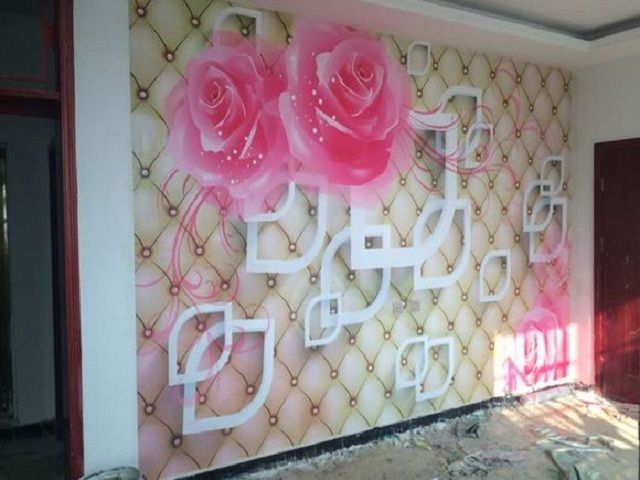What do you do if your water pipes freeze 2024?
I'll answer
Earn 20 gold coins for an accepted answer.20
Earn 20 gold coins for an accepted answer.
40more
40more
Emily Powell
Studied at University of California, Los Angeles (UCLA), Lives in Los Angeles, CA
As a home maintenance expert with years of experience in dealing with various household issues, I've encountered my fair share of frozen pipes. Here's a comprehensive guide on what to do if you find yourself in such a situation.
First and foremost, the initial signs of frozen pipes are often the absence of water flow from the faucets. If you suspect that your pipes are frozen, the first step is to inspect the pipes. Look for any visible signs of freezing, such as ice around the pipes or a drop in water pressure.
The next step is to turn up the heat in your home. This can help to gradually increase the temperature around the pipes and may assist in thawing them. Make sure to open cabinet doors under sinks and in areas where pipes are exposed, as this will allow warm air to circulate around the pipes.
Using a hair dryer is a common method to thaw pipes. Start by warming the pipe as close to the faucet as possible, working your way toward the coldest section of the pipe. Be cautious not to apply too much heat too quickly, as this can cause the pipe to crack. It's important to move the hair dryer slowly and evenly along the pipe.
In cases where the pipes have already burst, it's crucial to turn off the water at the main shutoff valve in the house immediately. This will prevent further damage and flooding. After turning off the water, leave the water faucets turned on. This will relieve pressure in the pipes and can help to prevent additional bursts.
If you're unable to thaw the pipes yourself, it's best to call a professional. Plumbers have the tools and expertise to safely thaw pipes and repair any damage that may have occurred.
Prevention is also key. To avoid frozen pipes in the future, insulate your pipes, especially those in unheated areas like basements, attics, and garages. Also, let faucets drip slightly during extremely cold weather to relieve pressure in the pipes.
Remember, dealing with frozen pipes can be a delicate process, and it's important to approach the situation with patience and care to avoid causing more damage to your home.
First and foremost, the initial signs of frozen pipes are often the absence of water flow from the faucets. If you suspect that your pipes are frozen, the first step is to inspect the pipes. Look for any visible signs of freezing, such as ice around the pipes or a drop in water pressure.
The next step is to turn up the heat in your home. This can help to gradually increase the temperature around the pipes and may assist in thawing them. Make sure to open cabinet doors under sinks and in areas where pipes are exposed, as this will allow warm air to circulate around the pipes.
Using a hair dryer is a common method to thaw pipes. Start by warming the pipe as close to the faucet as possible, working your way toward the coldest section of the pipe. Be cautious not to apply too much heat too quickly, as this can cause the pipe to crack. It's important to move the hair dryer slowly and evenly along the pipe.
In cases where the pipes have already burst, it's crucial to turn off the water at the main shutoff valve in the house immediately. This will prevent further damage and flooding. After turning off the water, leave the water faucets turned on. This will relieve pressure in the pipes and can help to prevent additional bursts.
If you're unable to thaw the pipes yourself, it's best to call a professional. Plumbers have the tools and expertise to safely thaw pipes and repair any damage that may have occurred.
Prevention is also key. To avoid frozen pipes in the future, insulate your pipes, especially those in unheated areas like basements, attics, and garages. Also, let faucets drip slightly during extremely cold weather to relieve pressure in the pipes.
Remember, dealing with frozen pipes can be a delicate process, and it's important to approach the situation with patience and care to avoid causing more damage to your home.
2024-06-11 15:00:33
reply(1)
Helpful(1122)
Helpful
Helpful(2)
Studied at the University of Manchester, Lives in Manchester, UK.
You may be able to thaw a frozen pipe using a hair dryer. Start by warming the pipe as close to the faucet as possible, working toward the coldest section of pipe. If your water pipes have already burst, turn off the water at the main shutoff valve in the house; leave the water faucets turned on.
2023-06-08 12:50:23
Isabella Rivera
QuesHub.com delivers expert answers and knowledge to you.
You may be able to thaw a frozen pipe using a hair dryer. Start by warming the pipe as close to the faucet as possible, working toward the coldest section of pipe. If your water pipes have already burst, turn off the water at the main shutoff valve in the house; leave the water faucets turned on.




